We made it! March has arrived at last. By now you’ve made your plans, ordered plants, started seeds. Do those plans include replacing your lawn with something different—something more colorful, diverse, and helpful to the environment? If so, this post is for you.
We hear a lot about how lawns are biological deserts and that meadow gardens are healthy and attractive alternatives, but actual examples of these in front yards are rare. Most of us are accustomed to the crisp, clean look of an emerald lawn and we tend to like what we’re used to seeing. Nevertheless, this jewel of a planting across the street from Loose Park has the potential to transform the way we think about lawns. Called “the fox house,” the corner lot has been transformed into a colorful micro-prairie.
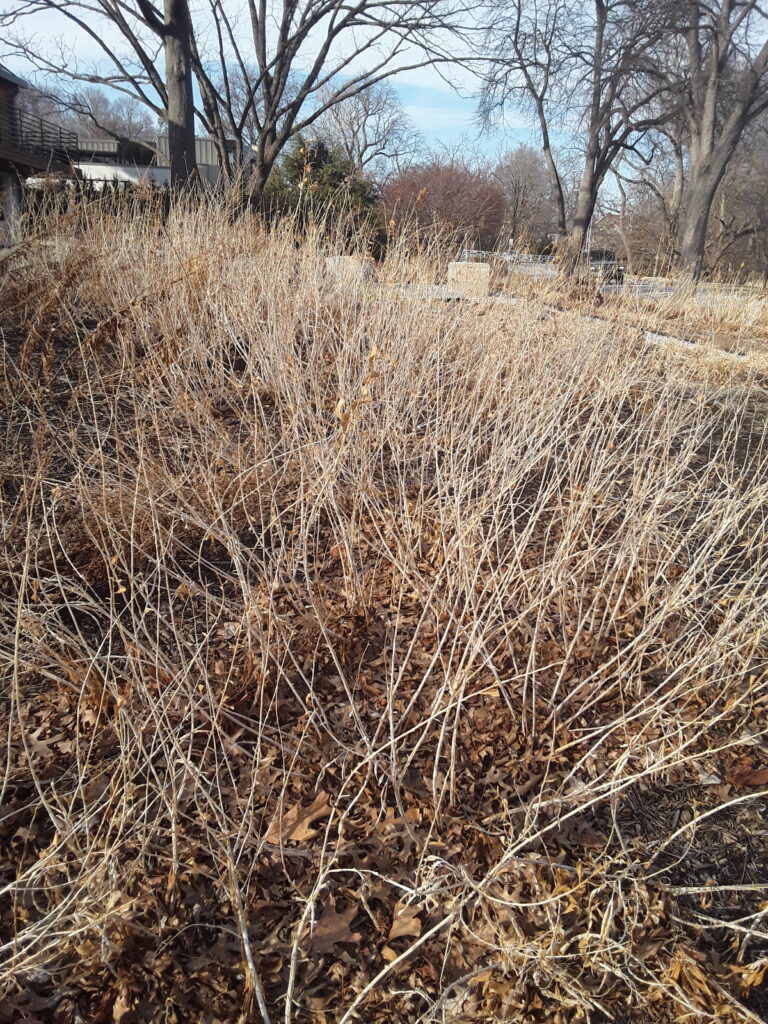
Last week I met with landscape designer Mackenzie Adkins to talk about how the project came to be. Adkins began working in horticulture about ten years ago after studying film—and he’s been-far more successful expressing his aesthetic flair in this new medium than I have been!
Working with a palette of native prairie plants, Adkins has achieved an exciting meadowy effect. He began planning the project for the homeowners in winter of 2019. The foundation plantings installed the following spring include a mix of natives and cultivars. As the homeowner’s interest grew, they made plans for a micro-prairie on the southeast corner. A late freeze pushed planting back to fall 2020. Now going into its second year, the garden has been delighting passers-by ever since.
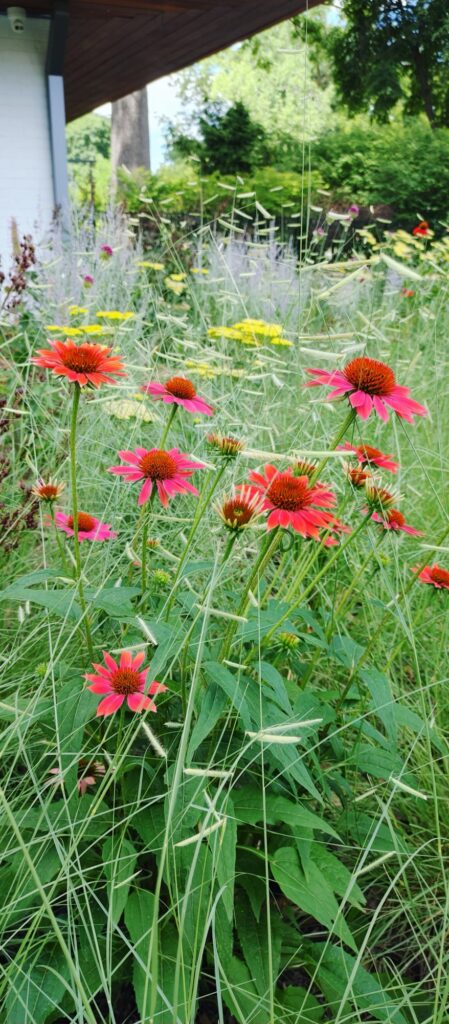
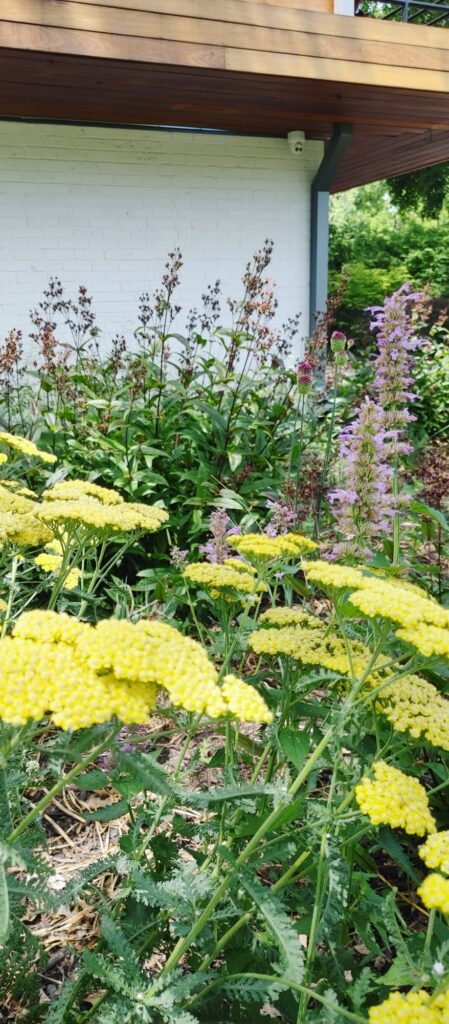
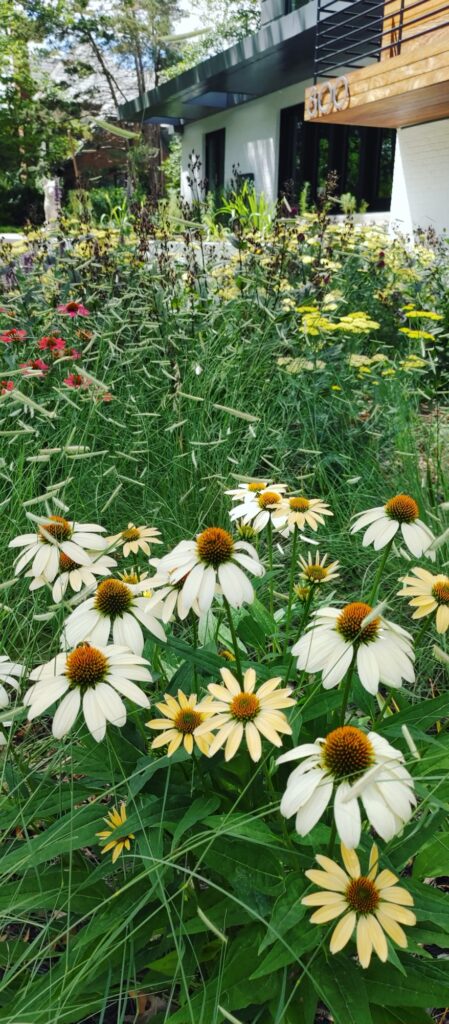
The results are both wild and not-wild. Metal edging, gravel paths, and limestone benches help organize the experience. It’s instructive to see how the plantings address the challenges of scale presented by the suburban setting. The plants are relatively compact, under three feet tall. They fulfill the homeowner’s request that they not block the view of the park.
These issues of scale are important, I’m discovering. As a kid I once got a piece of carpet to use in my doll’s house. The effect was absurd: the pile came up to the poor dolls ‘knees. Proportion must be scaled down to fit the miniature setting. Textures and colors sometimes need miniaturizing too. Adkins found the late spring-early summer palette (yellow achillea, purple agastache, green foliage) too garish (“Mardi gras,” he calls it) and is adding flowers of different colors to temper the effect. He is also adding more structural plants.
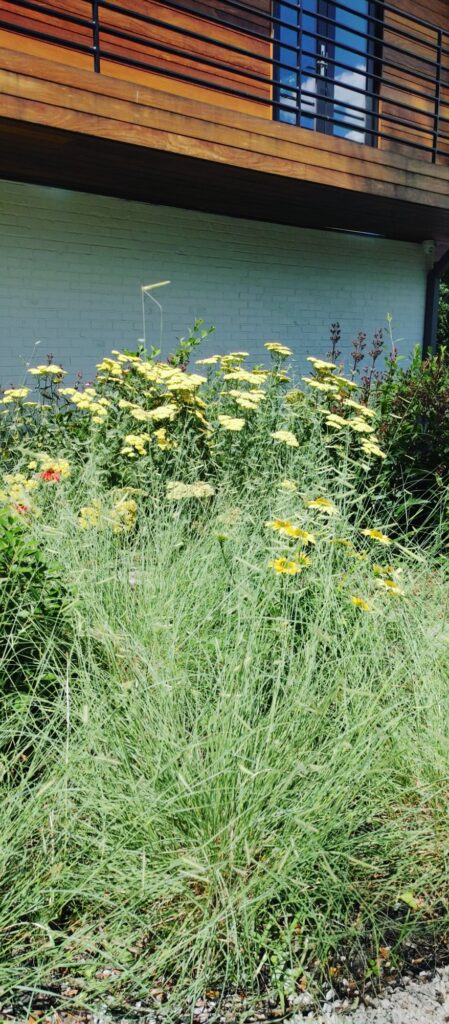
I see plants called structural a lot, but I’m not always sure what it means. In a perennial bed where everything dies back to the ground each year, what plants are considered structural and why? In this case, Adkins is adding grasses, baptisia, aromatic asters, and sedges that offer a pleasing contrast to the shapes of the other plants. The original plans called for 50% structural plants. He now says he would increase that percentage to 60 or even 70.
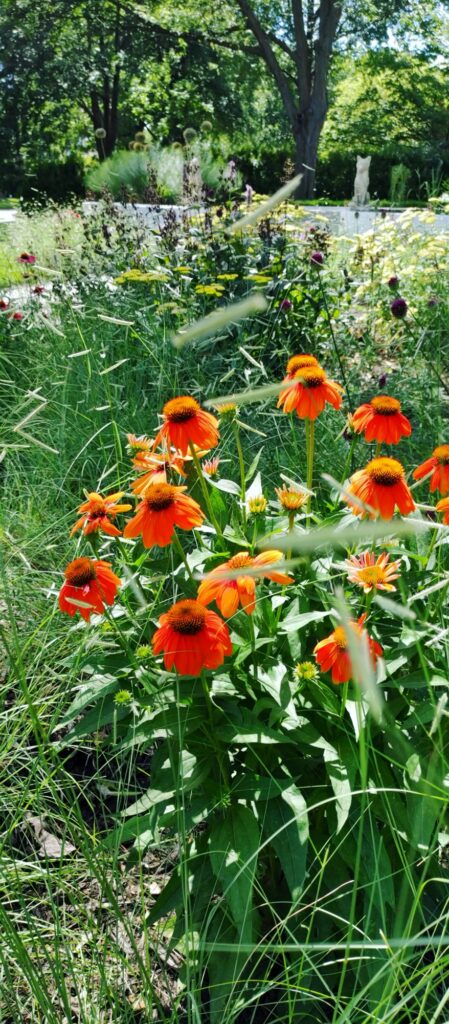
Others are thinking along the same lines. Owen Wormser, author of the book Lawns into Meadows: Growing a Regenerative Landscape, says, “Grasses are what create the character visually that reads like a meadow.” In this August 2020 interview with Margaret Roach he discusses considerations such as warm vs. cold season grasses, planting seeds vs. plugs, tilling, mowing, and other steps involved in creating a meadow garden.
Noel Kingsbury, writing in Planting: A New Perspective, also talks about the “70 percent rule,” and recommends using “a ratio of approximately seven structure plants to every three fillers.”
Another important consideration is choosing the right plants for the spot, “plants that will more than survive: they’ll thrive,” Adkins says. For those of us who like the meadow look but don’t want it everywhere, working with a landscape designer or experienced person can help us achieve the effects we desire.
Adkins’ attractive website and Instagram feed feature gorgeous photos and planting plans to learn from. We talked about a range of topics, including how to define “native,” beneficial nonnatives and cultivars, ecologically-minded public projects, blowsy roses, and the beauty of minimalistic Japanese gardens. Going forward, he hopes to marry his appreciation of their formality and minimalism with his love of drifts of native wildflowers as he develops his own unique vision.
Today as we drove down a residential street, my daughter said, “Those yards look like they were copied and pasted.” I love seeing people take a chance and try something different. Like with food, exposing ourselves to new flavors—cooking with spices other than salt—can increase our opportunities to experience pleasure. Because it’s in such a visible location, the Fox House Garden may inspire many of us to think, I could do that!
Here’s hoping for better days ahead.
(Photos from McKenzie Adkins. Used by permission.)
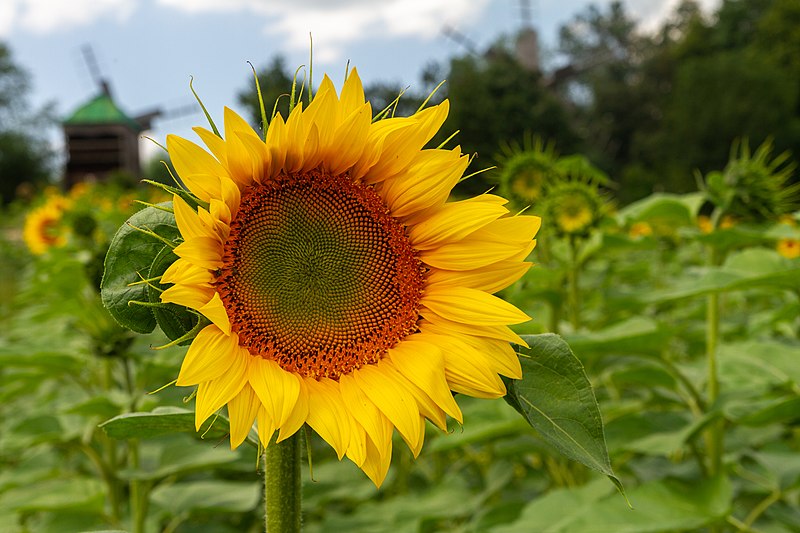


I love this idea. Just had 18 yards of compost mix from mo organics for my empty lot and am going to try a quilt type pattern and native grass
Diana, that sounds beautiful. Keep me posted — I’d love to see how it turns out. Thanks for reading!